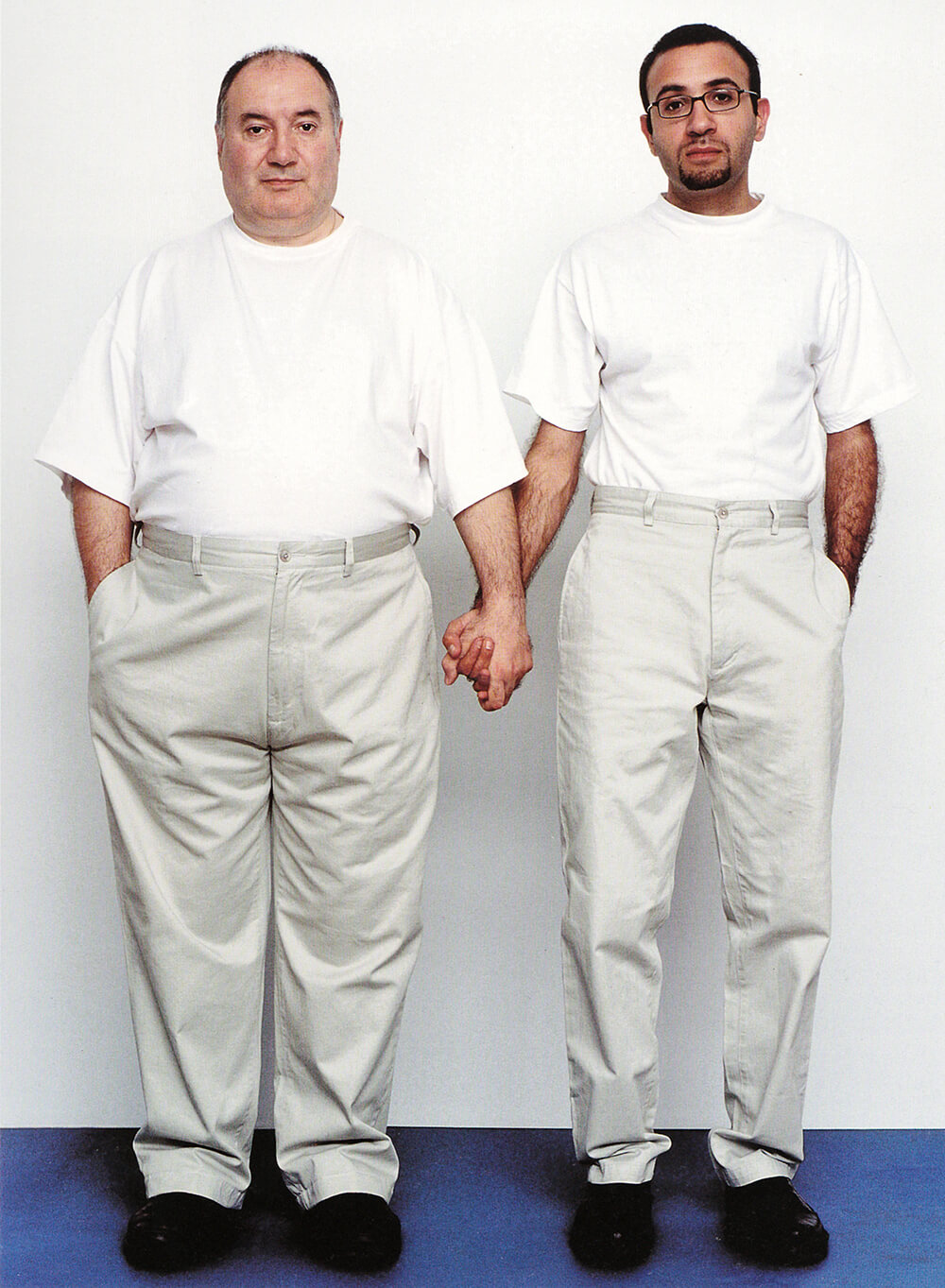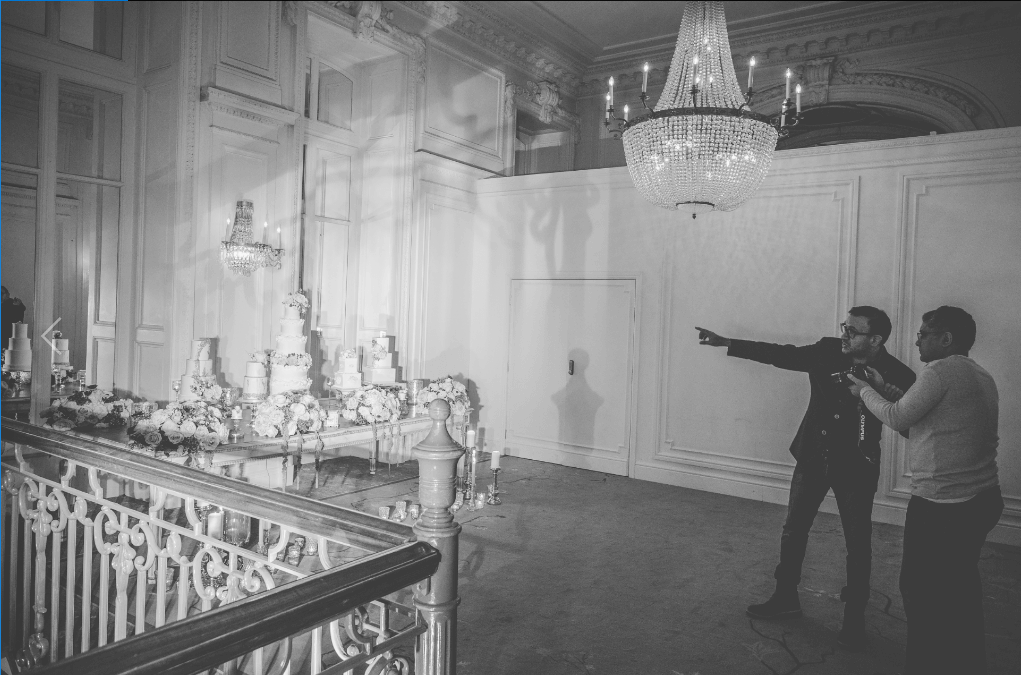John Nassari - the story behind the man, the photographer and the artist


“I’m a photographer – but I’m also a storyteller.” John Nassari
John Nassari certainly is the storyteller he proclaims to be; as much is evident in his incredible work which has won numerous accolades, and in his desire to continue to change the future of photography with the help of immersive technologies.

But what about the story behind the storyteller?
How did John Nassari get to be one of the most recognised and appreciated photographers in London today?
We met up with him to find out.
This is the story of John Nassari.
How it all began
At the tender age of 13, Cypriot born John was handed a Zenith VM by his stepfather. It was a Russian film camera and it was the best birthday present he’d ever received. Over the next few months (and as it turned out, years) John experimented with this camera and learnt all about the basics of photography with the help of his devoted parents.
“My father had this magical way of discussing aperture and shutter speed. I remember I just got it…it just made sense to me.”
John would write down the F stops and shutter speeds that he used for each photograph. He’d take the same picture but in different ways; changing how he exposed images and noting the different effects these changes had.
“Most of it was rubbish but my mum pulled a few aside and questioned why I’d photograph that particular shape or shadow. I used to say I don’t know – it just caught my eye. And that’s when I started to play around with form.”John knew from very early on that this was what he wanted to do. He’d been captured by the art of photography.
Nurturing his passion
Within the next 12 months, John had joined a local camera club and found himself developing real photography skills alongside a group of older gentlemen – all of whom were hobbyist photographers. It soon became clear to the club members that this 14-year-old boy had a very special talent for photography that reached far beyond the realms of a hobby.
A member of the camera club donated a darkroom to John and other members began to lend him equipment and teach him things that they themselves had learnt about photography.
“They were so kind to me” says John. “ I was so shy at the time. And then I started entering these competitions and actually winning them. Everyone was really thrilled for me.”
John went back to the camera club that helped him perfect his craft 10 years later to teach photography, and to his joy, some of the original members were still there.
Carving a niche
John was always interested in form, and particularly in shadows, colours and textures. John would photograph objects and landscapes more than he would people early on in his photographic journey.
Still life was John’s first love, and it is a love that has stayed with him throughout his career.
“When I shoot table decorations for weddings – that’s still life – so of course, I’m still shooting what I love to shoot most. I really enjoy it. It’s a technical process rather than the process of shooting a person. People came into my work later on.”
John pursued an academic career at the University of Arts in Rochester, and it was during this more practical period of his education that he began to shoot people.

By the time John reached 28 years of age he had completed his MA in Visual Culture (which was more theory than practical) and chose to undertake his dissertation on people, which is ultimately where some of his finest work begun to materialise.
“I think at some point or another, most photographers turn the camera on themselves. Maybe not directly on themselves but on their family. And that’s what I did.
“I began to think about ‘the self’ and about family, and I managed to take around 2,000 pictures in 2 years with my 35mm lens. In those days, everything I shot was with a 35mm. I’d photograph all kinds of occasions.”

“I went to see a curator with this collection of family photos and they asked me: “what’s the story?” I couldn’t really answer. As a body of work it just didn’t fit. So finding the story and meaning behind me and my family was a journey of exploration which involved me digging deeper to discover as much as I could about my background.”
At this stage of his career, John begun to explore emotion, family and relationships through the lens.
“I became focused on the subject of belonging and in turn, I rejected objects and aesthetics in favour of emotion.
“Emotion is a hard thing to capture. It’s not just about someone laughing. To capture raw emotion in a beautiful moment demands something more than a smile. The most powerful images – whether they include a touch, a look or a smile – capture an isolated moment; perhaps between a newly married couple whilst they’re surrounded by relatives dancing.
“How you convey that emotion within an aesthetic frame is what makes a photograph truly powerful.”
A defining moment that changed you…
Dad and Me is one of John’s most recognised and best-loved photographs. It won the Taylor West Award at the National Portrait Gallery in 1999 / 2000 and is one of the defining shots that signalled a shift in John’s career. He was officially on the map.
So how was the idea executed?
“Well I asked dad to go shopping – I gave him a budget and asked him to buy himself something and to also buy me the identical outfit. He asked me what it was all about – he didn’t get it but he participated and did it, and came back with these two matching outfits – one for each of us.

And so we put on our outfits and I set the timer on my camera for this self-portrait.”
“The outcome is a photograph about ambivalence. It’s about the relationship I have with my father and possibly the ambivalent relationship that many men have with their fathers.
“Conflict and contradiction are key – this photo suggests imitation and me wanting to be like my father; of course I admire him and look up to him, but there’s this tension about not wanting to actually become him.
“You admire your father but you don’t want to become him. We’re holding hands which implies intimacy but there’s also this distance between us – we’re not smiling.”
A defining moment in wedding photography…
The Cyclist is an iconic piece from John’s wedding collection and has won awards for its metaphorical display of two lives and two journeys intersecting at a pivotal moment.
“I had everything planned out perfectly. I was in position; I’d stopped traffic temporarily and guests were preparing to throw confetti as the couple emerged from the church. And then just as the sky exploded with colour a cyclist tears through the shot… I was so angry at the time but somehow had the presence of mind to keep shooting despite the interference of the cyclist.”
When John explained what had happened to the newlyweds they just smiled and said: “typically Cambridge”.
In the days that followed the wedding, John became more and more intrigued about this man – the cyclist. He wanted to enter the photo into a competition but needed permission from him. Plus he wanted to find this mystery man from a human interest perspective and enlist the help of others to create a bit of a buzz.
John reached out to the Cambridge News and they loved the story. It soon made it into the Metro and people everywhere started talking about the photograph and ‘the man’.
Eventually, Archie Wood – a Cambridge student – came forward as the mystery cyclist. In fact, he was late for his physics exam because he was speaking to John! John made it up to him and sent Archie a signed, framed copy of the photograph that had made him one of the most famed cyclist in the photography world.

What’s next for John Nassari…
As someone who doesn’t like to sit still for very long, it was to be expected that we’d soon see something groundbreaking from John.
Nassari 360 is an immersive, interactive, explorable 360 digital experience, which layers content in the form of a curated gallery of senses and environments.
People are able to view photographs, scroll around to see what lies beyond the frame, and hear the sounds of people and their surroundings.
Nassari 360 is to be launched at The Photography Show on 17th March at NEC Birmingham.
John is also close to completing an online wedding photography course which is designed for both aspiring photographers and established photographers outside of wedding industry.
Stay tuned for more from John Nassari and the latest in wedding photography news.
Looking for more wedding industry trends and couple insights? Head to the Bridebook Business Hub, the home of wedding industry knowledge.






